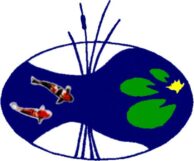When planning a feature, inheriting one, or even evaluating what you currently have. The extensive world of water features can seem daunting. Features often can get out of hand when aspects of the feature are based on wants rather than what our feature needs. When focusing on the needs of your feature the question must be asked, what is this made for. If it is for Koi, does it have proper space, depth, and filtration. If the feature is for plants does it get enough sun, shelf space, and calm water. Each feature’s purpose will greatly change how the feature is built and cared for. Focusing on these aspects early can lead to pond success.
Water Gardens
A water garden is defined as a pond featuring lush plant life and a healthy population of goldfish or other small pond fish. A water garden can be nearly any size, usually starting as small as around 100 gallons. This pond will have a deeper zone to allow for plants like waterlilies or lotus as well as to allow the fish to survive winter weather. 2 feet should be an adequate depth for most any climate, but colder areas may want to consider going deeper.
Waterlilies, lotus, and many other aquatic plants benefit from as much sun as possible. So placing the pond where these plants can get the sunlight they need to thrive will produce the most lush growth.
Because the plant life in the water garden provides natural filtration, the pond filter system can be relatively simple (although more is always better than less when it comes to filtration).
Goldfish stocking levels will vary based on filtration and personal preference, but a general rule is to keep no more than one goldfish per 50 gallons of water volume. The fewer fish you keep the less pond maintenance you can expect to need to do.
Koi Ponds
A koi pond’s focus is on the fish. Plants are usually few, if any, within the pond itself.
This is not to say that it’s not possible to keep plants with koi. Generally a koi pond is planned without plants unless the plants are used in a way such as a bog filter. You may even be able to keep some plants with your koi, this depends greatly on your particular fish. Many people find that they can keep waterlilies with their koi for the first couple of years with smaller fish but then as the koi get larger the destruction gets heavier. It is also possible to separate the plants from the koi. Some ways to do this include creating barriers around the plants, or keeping the plants in a separate but connected pond. A common approach to this is an “upper pond” that features the plant life that flows through a waterfall and/or stream into the main koi pond.
If you don’t keep plants, then the koi pond can often be placed in a shadier location.
Koi commonly reach lengths of over 24” and can even exceed 36”. These massive fish need a large pond with adequate depth. The minimum size pond we would suggest for keeping koi is 1000 gallons. The bigger the better. And one area of the pond should be at least 3’ deep. The general rule for stocking levels of koi is 1 fish for every 250 gallons.
The large fish require a more robust filtration system, even more so with lessened benefit from plant life. Large koi and the filter systems that support them also rely heavily on good aeration, so supplementing the waterfall with an air pump is highly recommended.
You may dream of a pond full of living jewels known as koi or relaxing by a pond full of beautiful, fragrant waterlilies. As long as you take the time to plan and create the best environment you can, you can ensure an enjoyable experience for years to come.
